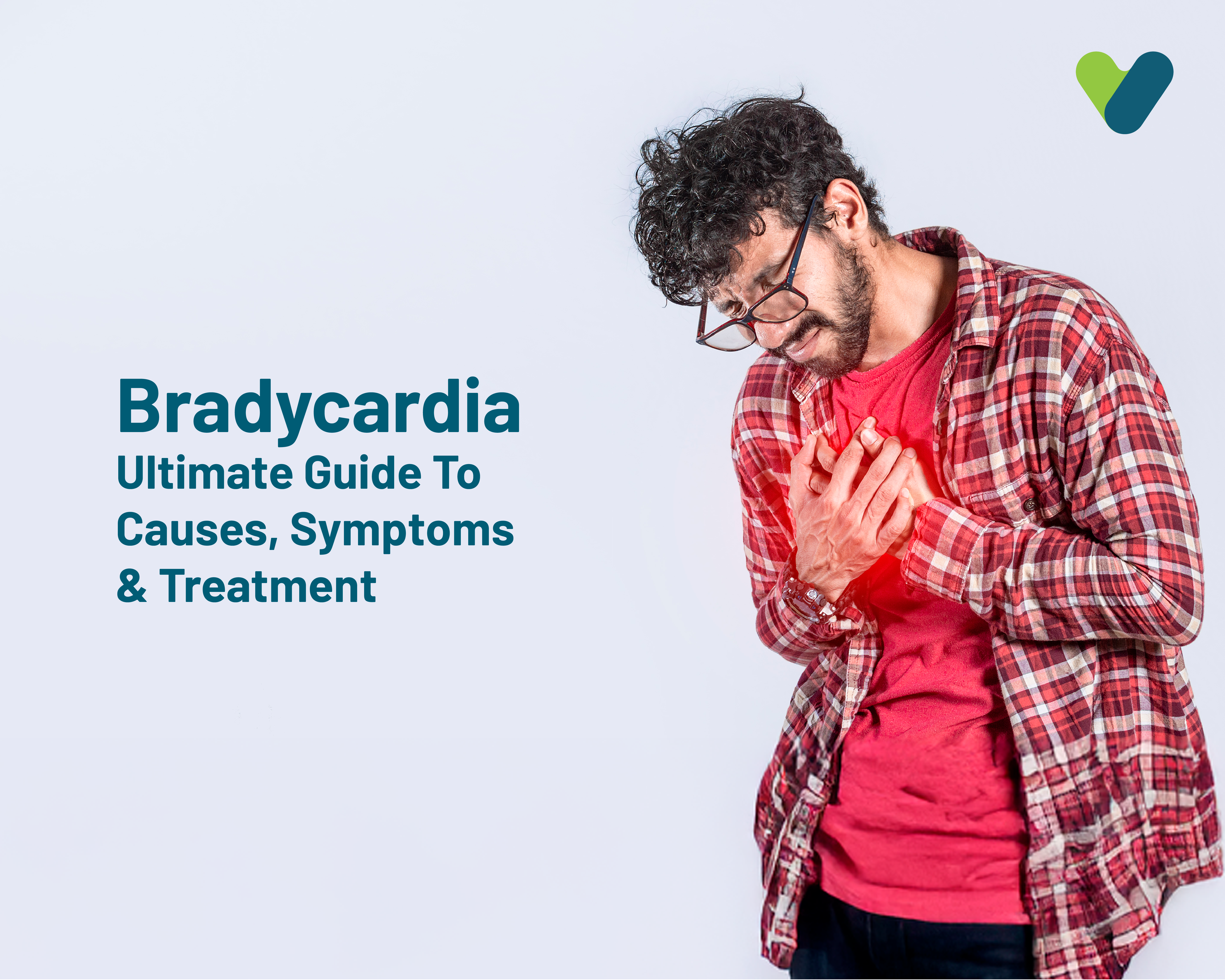Bradycardia is a medical disorder associated with an unusually slow heartbeat, that is, expectantly less than 60 beats within a minute. A slow heartbeat may be healthy amongst sportspersons or whilst at rest; yet, it may also be a cause of concern when the process of pulse is unable to provide enough blood because the other arms of the body are active. One must know bradycardia, the signs, the reasons why it occurs, and the treatment so that it can be spotted and dealt with in time.
Bradycardia Overview
The heart beat rate varies with the requirement of oxygen and energy by the body. The 60-100 heartbeats per minute are said to be within the normal range for adult human beings. Bradycardia is said to occur when the rate of beats drops below this figure.
Not all bradycardia cases pose threats. For instance, many sportspeople present with lower resting heart rates largely due to their more advanced and efficient circulatory systems. However, when presented with bradycardia accompanied by dizziness, exhaustion, or fainting, this could raise concerns about the conduction system of the heart, and thus medical attention will be needed.
Signs and Symptoms of Bradycardia
Bradycardia manifestations differ depending on the grade as well as the capabilities of the heart to send this blood adequately to the body. Some of the common symptoms of bradycardia include:
1.Fatigue: A tiredness that does not go away even after a sufficient period of rest.
2.Dizziness or Light-headedness: Low blood perfusion to the brain.
3.Shortness of Breath: Commonly during exertion.
4.Chest Pain: In extreme instances, it can be due to a lack of oxygen.
5.Fainting (Syncope): It is the state of being unconscious in certain periods due to not getting sufficient perfusion.
6.Confusion or Memory Problems: More pronounced among the elderly.
7.Fat or lethargy: As a result of poor circulation.
In some instances, there are neither signs or symptoms that accompany bradycardia, and so they will be found in the course of a normal medical checkup or medical examination.
Causes of Bradycardia
Several factors can disrupt the heart’s electrical signaling and cause bradycardia. Following are the common causes of Bradycardia :
- Age-Related Changes: With age, the electrical pathways of the heart are affected, which results in lower heart rates.
2.Heart Conditions: Conditions like coronary artery disease, myocarditis, or a history of myocardial infarction leave scars on the myocardium.
3.Medications: Some of them include anti-hypertensive medications such as beta-blockers, calcium channel blockers, and digoxin, which inhibit heart rates.
4.Electrolyte Imbalances: Depression of serum potassium or calcium levels may also affect heart impulses.
5.Hypothyroidism: A disease where the thyroid glands are not active, thereby causing a decrease in metabolic activities, including heartbeat.
6.Sleep Apnea: Sometimes patients may develop bradycardia due to episodes of cessation of breath while sleeping.
7.Congenital Heart Conditions: Some individuals are born with abnormal heart rhythms.
8.Infections: Such diseases, inclusive of Lyme disease and rheumatic fever, can impair the heart.
Management of Bradycardia
Bradycardia treatments differs depending on the etiology, the degree of the condition, and the overall health status of the patient. These include:
1.Correction of Contributing Conditions: Hypothyroidism, infection, or electrolyte disturbances can be treated and bradycardia resolved.
2.Modification of Therapy: In situations where the palpitation is attributable to medications, the physician will reduce the dose or switch to a different drug.
3.Pacemaker Implantation: In very severe types, in which the normal rhythm cannot be maintained by the heart, a device will be used to ensure the heart rhythm is normal, commonly referred to as a pacemaker.
4.Changes in Lifestyle: Lowering anxiety, using alcohol in moderation, and eating properly can help promote cardiovascular well-being.
5.Emergency Intervention: In urgent instances, pacing can be done temporarily or medication administered through an intravenous route.
Conclusion
Bradycardia can be benign or pathological, depending on the underlying cause, associated symptoms, and provocation. Early recognition and prompt treatment are important to avoid subsequent complications such as congestive heart failure or cardiac arrest. If you notice any of the above mentioned symptoms, consult a cardiologist today.

